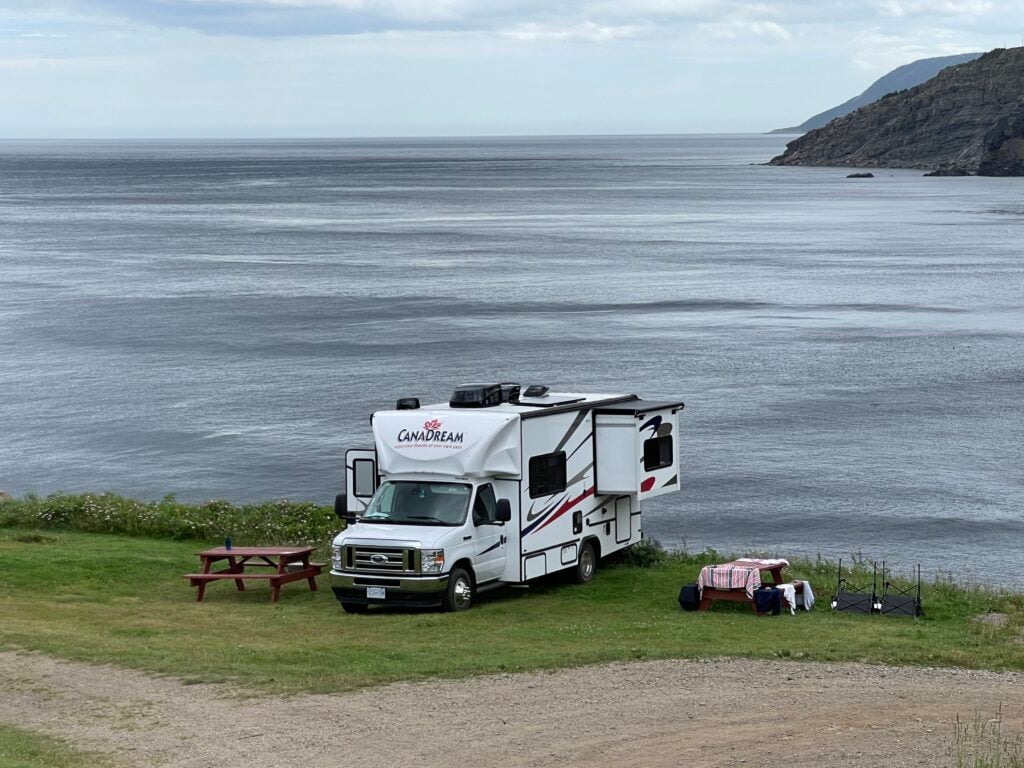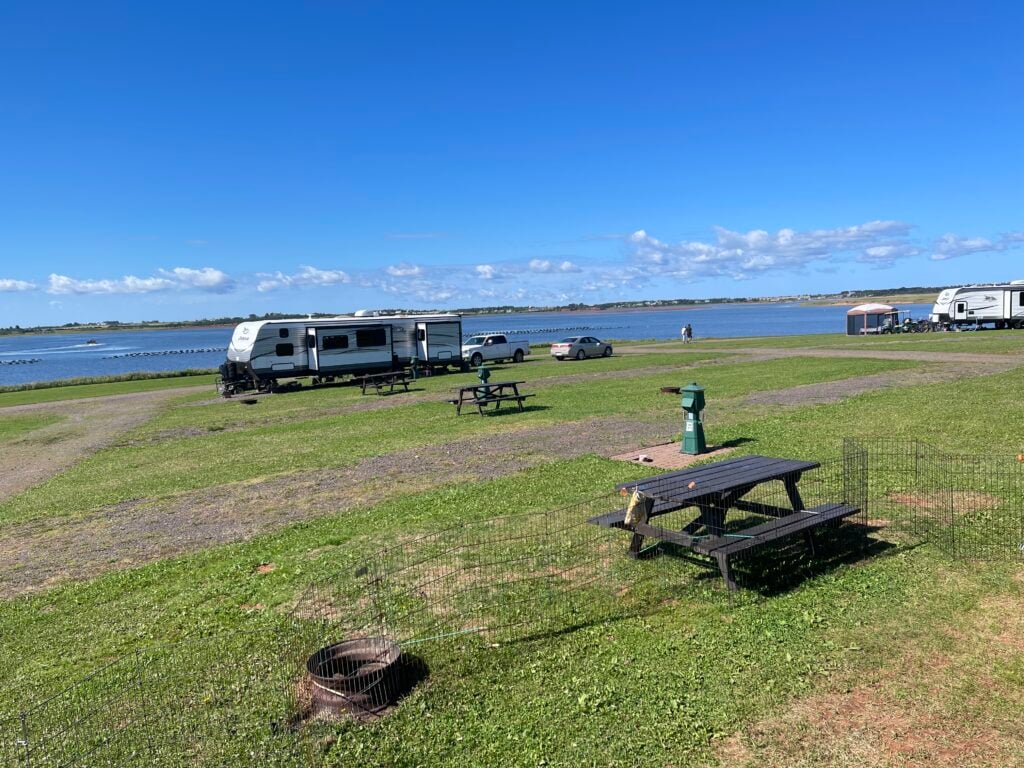RV Market Update: Is Now A Good Time To Sell Your RV?
 Source: Photo P. Dent
Source: Photo P. DentSponsored by National Vehicle
The Evolution of the RV Industry: From Explosive Growth to Sustainable Practices
It’s no secret that the RV industry has seen an amazing transformation over the past few years. The RV market has enjoyed an eye-popping boom during the pandemic, then a modest decline preceded the current state of stability. Now it’s on the threshold of a bright new future, which includes changes in technology (including electric RVs) and new socioeconomic norms that promise to fuel the industry with a steady stream of new RV enthusiasts.
The US accounts for 40% of the global RV market with year-over-year sales increases of approximately 15% every year between 2009 and 2019. Then the pandemic swept across the country (and the world), and instead of hampering sales, it caused RV sales to go through the roof. By early 2022, RV dealers were just about out of inventory, and all the RV manufacturers were under immense pressure to keep up with the demand.
By April 2022, Winnebago was carrying a 4.4 billion dollar backlog of sales stemming from the insane interest in RVing caused by the pandemic and exacerbated by the disruption COVID-19 had on the industrial workforce and supply chains. During that time frame, over a million new RVs were added to the 11 million American households that currently own a recreational vehicle.
The pandemic spiked the RV market
The pandemic forced people into isolation, restricted leisure activities and choices, and created feelings of vulnerability. Other factors also contributed to the pandemic spike in RV sales, such as low interest rates, a robust real estate market, ample RV financing, government stimulus money, consumer confidence, and people being forced to adopt new ways of working and learning. The RV market was primed for an explosion.
All these factors created the perfect storm for a skyrocketing new interest in RVing. For the first time, people were not just being allowed to work remotely, they were required to do so. Children were suddenly expected to keep up with their academic challenges through remote learning, and families that had been trapped in a commuter lifestyle were suddenly set free. Those who had ever fantasized about “someday selling their house and hitting the road to explore the country in an RV” saw the perfect opportunity unfolding in front of them. And millions acted on it.

After the pandemic
After the RV sales boom during the pandemic, manufacturers began to clear their sales backlogs. Their workforce returned, and the supply chains (which had virtually halted assembly lines) were finally restored. Interest in RVing stabilized back to pre-pandemic levels. Shipment of new inventory to RV dealers across the country continues to be somewhat lower than pre-pandemic levels, but they are expected to return to normal over the next 12 to 18 months.
The RV market may have stabilized, but the outdoor hospitality industry was the next segment of the industry to feel the pressure. Campgrounds and outdoor hospitality enterprises responded to the growing demand from new RVers (and from old friends and loyal customers) to provide more camping opportunities. Outdoor hospitality providers started ramping up their supply. New campgrounds were and are being built, and existing campgrounds are being modified to accommodate more campers and offer more services.
KOA began adding new facilities to their existing network and Thousand Trails redefined different membership packages to meet the growing demand.
Used RVs sustain the RV market
Although dealer orders for new RVs are down about 49% from last year, they are widely expected to return to previous levels in the next year to 18 months. However, used RV sales are robust and exceed the previous year’s sales.
Lower new RV sales may be partly due to higher interest rates, more restrictive RV financing, and lower consumer confidence. But many of the people who bought RVs during the pandemic didn’t have a lot of inventory from which to choose, so they bought RVs that were not an optimal fit for their needs.
Now that more inventory is available, they are trading them in for a better fit. Whether their RV was too large, too small, had an awkward floor plan, didn’t have an outdoor galley, or only sleeps four but now the family has grown to five, a comfortable fit between an RVer’s needs and the RV’s design is critical.
Camping World’s recent experiences illustrate the differences between the used and new RV markets. Camping World’s overall revenues are down, but their used RV sales have sustained them partly because used RV sales are up year-over-year, and these RVs have a higher profit margin than new RVs.
“As we predicted, despite softer new vehicle demand and gross margin in the quarter, we saw record-setting gross profit performance in used vehicles and Good Sam services and plans.”
Marcus Lemonis, Chairman and CEO of Camping World Holdings
Interest in RVing continues to grow
Interest in RVing continues to be intense, especially now that more campgrounds are coming online and there are exciting changes in services and technology, such as the aforementioned release of electric RVs into the RV market. Newly certified eco-friendly RV parks are also a boost.
A recent survey by Kampgrounds of America shows that 60% of campers have optimistic views of future economic conditions, and statistics of current and future camping trip planning shows the future of RVing is stable. Over 30% of those surveyed have already booked all of their 2024 RV reservations.
Now is the time to buy or upgrade your RV
If you’re contemplating buying or upgrading your RV, this is an opportune time to do so, and there’s no better place to transact that business than in the private RV market.
When buying an RV, you’ll find the largest selection of pre-owned RVs, and if you’re selling one, you’ll get the maximum return on your investment (up to 25% more than what you would get if you traded it in at a dealership). The best way to navigate the private marketplace is to contact the professionals at National Vehicle, regardless of whether you’re buying or selling.

Sell a used RV
Many people who purchased an RV during the pandemic are in a situation where they need to sell (or just want to sell) their RV. Additionally, some of the new people who joined the RV community during the pandemic are also experiencing pressure to return to the office or have discovered that their children do better in a classroom setting. Others accomplished all they wanted to do in an RV, or they realized that RVing is more stressful and expensive than expected.
Whatever the reason, there are many people ready to sell their RVs, which is fueling the used RV market. But few of them know that the best way—the most lucrative way to sell their RV—is in the private marketplace. And the For-Sale-By-Owner RV market is best facilitated by National Vehicle, a company whose only purpose is to assist private RV sellers transact that business. To get that process started, National Vehicle will provide a free RV valuation, so you know exactly what your RV is worth before you make any other decisions.
The current state of the RV industry
Even though the RV industry has had some wild swings in the past few years, and there are over a million more RVs on the road today, there’s still plenty of places to camp and recreate. After all, even with the increased interest in RVing during the pandemic, only 13.6% of Americans own an RV, even though research shows that it’s still about 30% less expensive to camp in an RV than to drive a car and stay in a hotel.
Your personal situation may dictate that you need to sell your RV, and as stated earlier, there’s no better time to do that than now. There are thousands of eager shoppers looking for the perfect RV for their new adventure. New buyers will be looking for something that offers them the safe recreational opportunity that so many people enjoyed throughout the height of the pandemic.
If you are ready to sell your RV, the easiest way is to just contact National Vehicle and start with their free valuation (so you know what it’s worth) and to learn how to proceed.

Campsites are open
As full-time RVers, we have been camping in an RV long before, during, and after the pandemic. We’ve enjoyed camping experiences all across the US and Canada and have been able to find delightful campgrounds everywhere we’ve traveled. Rarely are the parks completely full, and with a little forethought and planning, you can find great places to camp even in the busiest seasons, in the busiest locations, and even on holidays.
We recently booked lakeside camping in Lake George, New York, in April, and also in Yarmouth, Nova Scotia, in August, as well as all points in between. Neither campground mentioned was fully occupied, and in both locations, there were numerous vacant lakeside or riverfront full hook-up campsites available for rent.
When we were on the Upper Peninsula of Michigan, we explored numerous campgrounds, and most had vacancies with full hook-up sites. The same was true in Wyoming, Oregon, South Dakota, North Carolina, Florida, Texas, and all the places in between.
Right now, we’re camped in a very well-appointed (but inexpensive RV campground) near Prince Edward Island in the middle of August, and we are surrounded by dozens of empty campsites. We honestly have not noticed that there are more people competing for campsites, even though that complaint is widely publicized.
RVing is more popular than ever
In our opinion, RVing is still a fantastic, safe, and affordable recreational opportunity to get out into nature and enjoy the great outdoors. From the standpoint of exposure to contagious pathogens, like COVID, it’s safer than flying or cruising, and it puts you in the driver’s seat (literally) regarding your risk.
Camping opportunities are abundant, and new campgrounds are being built at a steady pace to keep up with the growing demand. The RV market experienced a boom during the pandemic but has returned to a state of stability, and the industry is healthy, robust, and growing.
Consequently, it’s an awesome time to get involved in RVing if you’re not already camping in a recreational vehicle. If the RV you have now doesn’t fit your needs anymore, then now is also a good time to sell it and find a better fit. Both things can be done via National Vehicle, where real people will listen to you and then do everything in their power to help you either buy or sell an RV, or both.
The post RV Market Update: Is Now A Good Time To Sell Your RV? appeared first on RV LIFE.







